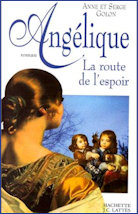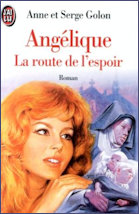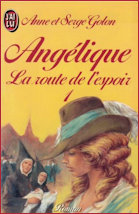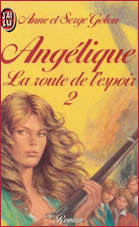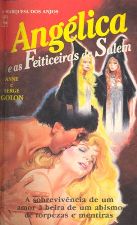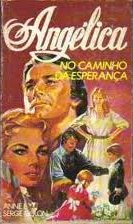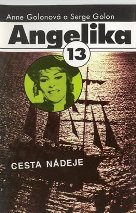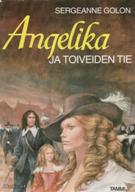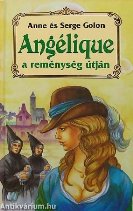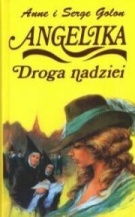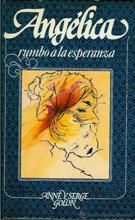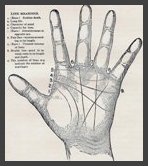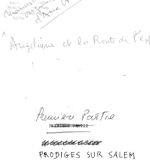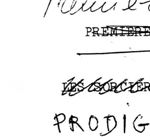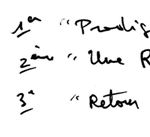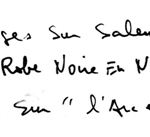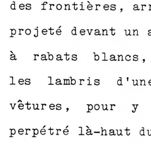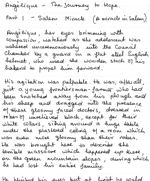Book 12 - Angélique, La Route de L'Espoir
This page is a devoted to a compilation and intelligent speculation about the content of Book 12 based on what is available in the literary world but not yet available in English translation - 'Angélique, La Route de L'Espoir'
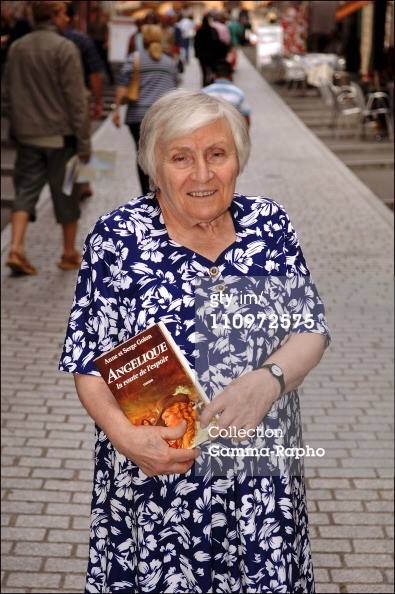
French writer Anne Golon, author of Angelique, Marquise of the Angels in Lausanne, Switzerland on 5th July, 2005. (Photo by Lionel FLUSIN/Gamma-Rapho via Getty Images) By: Lionel FLUSINCollection: People:
I thought I would refresh this page after finding this image of Anne Golon on the Getty Images website - how fitting that she should be smiling whilst holding the next chapter of her extraordinary 'oeuvre'
The Book
Angélique - La Route de L'Espoir is Book 12 in the series and one of the three books not yet available in English. The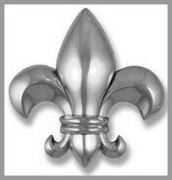 title is proving to be tricky to translate into the English language and is usually accepted as 'Pathway' or 'Path to Hope' either of which is, to say the least, more than a little clumsy. However, this book title does translate well into several other languages (see sidebar) which makes it doubly irritating and frustrating for those of us still waiting to find out if this book will ever see the light of day in the English language. Even if it does, will the (literal) translation be used? To me it would not, for a punchy and attractive title make! Would you be tempted to buy a book whose title stated 'Pathway to Hope'? Try as I might, there is nothing really that makes me want to jump with joy in relation to any possible translation of this title - according to the dictionaries 'expectation' could be intermingled with the meaning of hope but I still cannot see it as satisfactory! 'Angélique expectant'?
title is proving to be tricky to translate into the English language and is usually accepted as 'Pathway' or 'Path to Hope' either of which is, to say the least, more than a little clumsy. However, this book title does translate well into several other languages (see sidebar) which makes it doubly irritating and frustrating for those of us still waiting to find out if this book will ever see the light of day in the English language. Even if it does, will the (literal) translation be used? To me it would not, for a punchy and attractive title make! Would you be tempted to buy a book whose title stated 'Pathway to Hope'? Try as I might, there is nothing really that makes me want to jump with joy in relation to any possible translation of this title - according to the dictionaries 'expectation' could be intermingled with the meaning of hope but I still cannot see it as satisfactory! 'Angélique expectant'?
Interestingly, some languages use the same word for 'route' as they do for 'chemin' - certainly Polish does : 'Droga 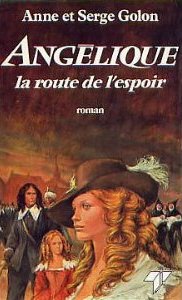 do Wersalu' and 'Droga Nadziei'. (I'm working on a list of titles** in different languages, but it is still in its 'raw' format and won't be available for a little while yet*). So, several people have been known to moot 'Road to Hope' as an alternative - but why did Anne use the word 'Route' to differentiate from 'Chemin' (which, to compound matters can also be translated as 'path?). Knowing her use of the written word she will have deliberately used 'Route' which must have a different significance in French to 'Chemin' in this instance. I discussed this further with my husband, who has read the first two books of the series so knows something of the style and thoroughness of the author and like me he agreed that the use of the word 'route' differed significantly from Chemin. We both agree that 'Road' (as in Versailles) has a purpose - the road Angélique was taking was leading her to Versailles - that was her goal and her achievement; she was once more recognised by her liege lord, King Louis XIV. The use of 'route' in this case seems to evoke more of a journey - there is purpose but it has not yet been achieved, it will eventually lead to somewhere, someone or something .......
do Wersalu' and 'Droga Nadziei'. (I'm working on a list of titles** in different languages, but it is still in its 'raw' format and won't be available for a little while yet*). So, several people have been known to moot 'Road to Hope' as an alternative - but why did Anne use the word 'Route' to differentiate from 'Chemin' (which, to compound matters can also be translated as 'path?). Knowing her use of the written word she will have deliberately used 'Route' which must have a different significance in French to 'Chemin' in this instance. I discussed this further with my husband, who has read the first two books of the series so knows something of the style and thoroughness of the author and like me he agreed that the use of the word 'route' differed significantly from Chemin. We both agree that 'Road' (as in Versailles) has a purpose - the road Angélique was taking was leading her to Versailles - that was her goal and her achievement; she was once more recognised by her liege lord, King Louis XIV. The use of 'route' in this case seems to evoke more of a journey - there is purpose but it has not yet been achieved, it will eventually lead to somewhere, someone or something .......
Talking of Anne's use of the written word I am reminded of a conversation I had with her daughter very early on in our friendship when she first brought to my attention how her mother's work had been edited. Whereas Anne had allowed Angélique a full page to marvel at what she was seeing and feeling in this new and untouched world, the editors condensed it into one sentence remarking that the sky Angélique was looking at was painted in all the shades of dawn colours!
* A quick update confirms that the following languages use the same word for 'Chemin' and 'Route' :
Brazilian - Caminho
Croatian/Serbian - Putu
Czech - Cesta
Roumanian - Si drumul
(**I believe I have identified the 25 languages boasted on the back covers of the French J'ai Lu editions and will make the spreadsheet available as soon as it is in a more presentable style)
Part 1 of the book is called 'Miracle in Salem' and places the action in New England in the middle of the fermenting 'witch hunts' and trials which highlight the prejudices of that very old world which many sought to escape. It's an interesting concept, by the author, to place two such prominent members of the French Court (profoundly Catholic of course) as the Count and Countess Peyrac into this maelstrom. And, it is reasonable to expect that they should be viewed with suspicion, if not with downright hostility and shunned outright by the English Protestant community. However, we know from previous books that Anne Golon never shies away from a challenge. And needless to say, Angélique and Joffrey are very much in the forefront of the action - the opening scene has Angélique sitting in judgement of a young man and, as she has (apparently) learned to speak English, is conducting the proceedings!
Talking of challenges, as usual Anne Golon makes us get our calculators out to try and work out the ages of Angélique and Joffrey in this book - I think in general terms most of her readers are happy to accept that Angélique herself is probably 39 or 40 and still, realistically of child-bearing age. And ... you may remember a certain prophesy in one of the earliest books, Road to Versailles, in which Angélique is told she will bear*** six children.
"A drunken Voisin seizes first on Madame Scarron, telling her that the King will love her and one day marry her. 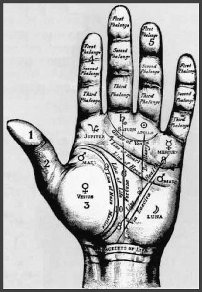 Then she tells Montespan that King will love her, too, but he won’t marry her. Finally she reads Angélique’s palm:
Then she tells Montespan that King will love her, too, but he won’t marry her. Finally she reads Angélique’s palm:
“A fabulous destiny! Night, but also Fire, a Fire that dominates all.”
“I would like to know if I shall marry a Marquis.”
“I can’t tell you if he’s a Marquis, but I see two marriages. There, those two small strokes. And then six children…”
“Merciful Lord!…”
“And also…love affairs! – one, two, three, four, five…”
“Don’t bother,” protested Angélique, trying to draw away her hand.
“No, wait!…The Fire is what’s so surprising. It burns right across your whole life…to the very end. It blazes so fiercely that it hides the Sun. The King will love you, but you won’t love him on account of that Fire…”
In the carriage that was taking them back, Athénaïs raged.
“That woman isn’t worth the tiniest sou of all the money people give her. I’ve never heard such a collection of rubbish. The King will love you!…the King will love you!…She says the same thing to everybody!”
Angélique: The Road to Versailles by Sergeanne Golon
Poor petulant Athénaïs, could she even dream that her illegitimate son would one day become the Count of Toulouse - I can't wait to find out how that real historical fact works out in Book 14!
Back, therefore to the question of six children and Angélique's child-bearing capabilities. We know she's as healthy as a horse and there was no evidence, offered by the author, of any close in-breeding in the de Sancé or de Peyrac families. Florimond is hale and hearty and born into privilege, Cantor is sturdy and hearty despite his impoverished entry into this world. The deeply mourned Charles-Henri, child of closely related cousins, appeared not to have inherited any infirmities and his death was not attributable to any in-breeding worries. (***Angélique carried an interim child by Colin Paturel, but miscarried before coming to full term.) Honorine stemmed from an alternative gene pool and apart from inheriting a triple dose of mischief and an undeniably high curiosity and IQ level is a healthy child with healthy appetites. She even survives the cruellest of hands dealt to her by fate in the most difficult of conditions as described in Book 13.
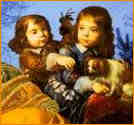
That's four of the children accounted for - two more to be woven into the storyline. It seems Anne Golon decided to ease up on her principal characters and allowed them the simpler option of a twin birthing - one boy and one girl! The children are given beautiful names : Raimon-Roger and Gloriandre. (In another twist - Gloriandre inherits her father's luxuriant and black curls, poor little Raimon-Roger, being the weaker remains bald for much of the story line giving Honorine the opportunity to put her skills to the test and creating another redhead in the family!)
Two of the major strands then, of this book and the long forgotten memory described above (the Salem trials and the art of palmistry) that I intend to concentrate on are both in part one which translates easily enough into 'Miracle at Salem'.
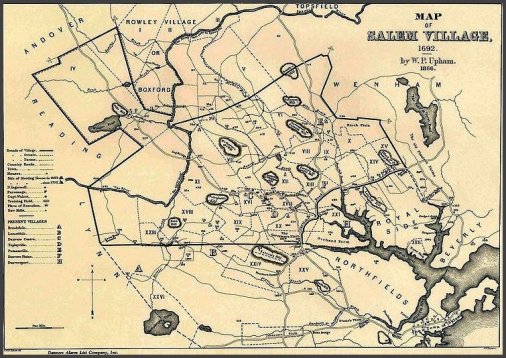
A map of 'downtown' Salem as it will have looked in 1692 - image sourced from the Salem Library
This page will deal with what was happening in Salem at the time and how events still impact in the 21st century - such as, the Salem Police Department wear their Witch City badges with pride.
L to R The Original Salem Police Badge and the new modern one with which it has been replaced.
Using the new format police badge the divisions are identified as the pedal bicycle unit, the police diving team and the motor-bike unit.
Witch Torture
My thanks to Lady of Spiders who has already created her own web-page dealing thoroughly with the subject of witch torture from the middle ages via the Inquisition and beyond and for anyone having a morbid fascination please follow the links. I am grateful to her for concentrating in part on the impact on the inhabitants of Salem who are notorious rather than famous for their witch trials but who can make a decent living, now from those 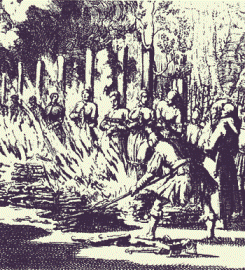 unenlightened times. Our personal visit to New England and Salem will, in time, be included in and recounted on the Anne Golon page.
unenlightened times. Our personal visit to New England and Salem will, in time, be included in and recounted on the Anne Golon page.
And so back to the inhabitants of this turbulent time, who believed they had escaped the horrors of Europe steeped in the fanatical pursuit of poisoners and sorcerers and those not adhering to the old religion.
Witch-hunting, after a major outbreak in France, had begun to decrease. In 1643-1645, the largest witch-hunt in French history occurred resulting in an exodus to the new world. During those two years there were at least 650 arrests in Languedoc alone. The same time-frame was also one of intense witch-hunting in England, as the English civil war created an atmosphere of unrest that fuelled the hunting, especially under Matthew Hopkins. However, the number of trials began to drop sharply, in the late 1640s. By 1648 Holland had become a tolerant society that had done away with punishments for witchcraft.
Wholesale slaughter of 'witches' at the height of the persecution years.
Not however for the settlers in the New World who now, in the late 1600s, face, once more the witch hunt - prevalent everywhere but not more so than in Salem.

Matthew Hopkins, Witchfinder General - image sourced from visit-constablecountry
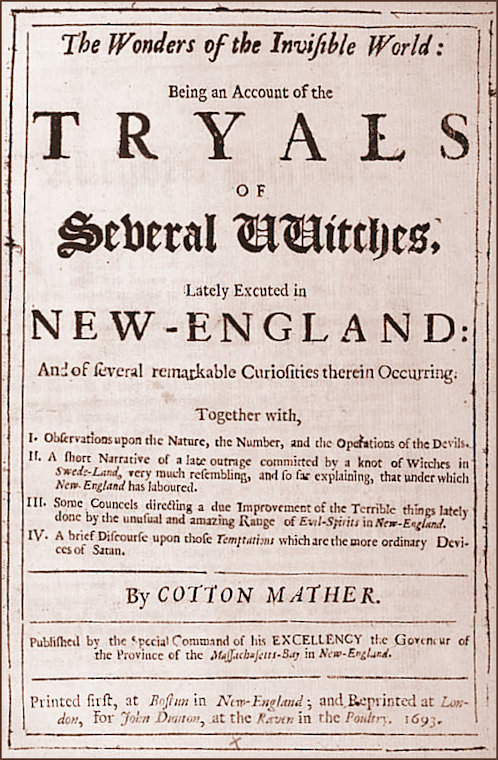
'The Wonders of the Invisible World' Public Trial Notice of 1693 - sourced from the Salem Library
Salem also introduced its own particular form of torture that of the 'Stacking Stones' re-enacted for visitors to Salem at the city's museum.
This method was most commonly used during the Salem witch trials in order to extract a confession.
The accused (male or female) would be forced to the ground and lain prone. A flat stone slab would then be placed on their sternum. Questioning would start and the more the victim protested their innocence and denied their affiliation with the devil and sorcery, the more rocks were gradually placed onto the slab.
Needless to say many died, crushed to death, others capitulated only to find themselves executed in some other manner or ostracised and banished from their community, tainted forever with the stigma of witchcraft.
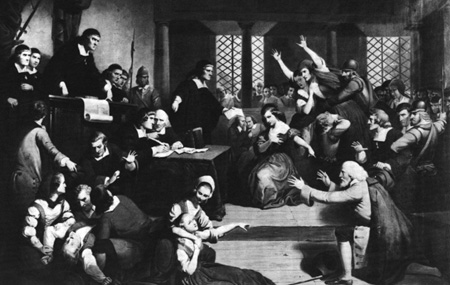
Salem Witch Trial, artist's reconstruction. Peabody Essex Museum
From the Salem Museum web-site:
The Salem Witch Trials of 1692
In January of 1692, the daughter and niece of Reverend Samuel Parris of Salem Village became ill. When they failed to improve, the village doctor, William Griggs, was called in. His diagnosis of bewitchment put into motion the forces that would ultimately result in the death by hanging of nineteen men and women. In addition, one man was crushed to death; seven others died in prison, and the lives of many were irrevocably changed.

Dr. William Griggs examines Betty Parris and declares her possessed by the Devil.
To understand the events of the Salem witch trials, it is necessary to examine the times in which accusations of witchcraft occurred. There were the ordinary stresses of 17th-century life in Massachusetts Bay Colony. A strong belief in the devil, factions among Salem Village fanatics and rivalry with nearby Salem Town, a recent small pox epidemic and the threat of attack by warring tribes created a fertile ground for fear and suspicion. Soon prisons were filled with more than 150 men and women from towns surrounding Salem. Their names had been "cried out" by tormented young girls as the cause of their pain. All would await trial for a crime punishable by death in 17th-century New England, the practice of witchcraft.
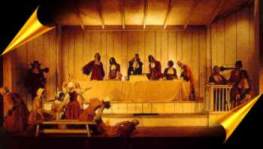
Trial of Rebecca Nurse
In June of 1692, the special Court of Oyer (to hear) and Terminer (to decide) sat in Salem to hear the cases of witchcraft. Presided over by Chief Justice William Stoughton, the court was made up of magistrates and jurors. The first to be tried was Bridget Bishop of Salem who was found guilty and was hanged on June 10. Thirteen women and five men from all stations of life followed her to the gallows on three successive hanging days before the court was disbanded by Governor William Phipps in October of that year. The Superior Court of Judicature, formed to replace the "witchcraft" court, did not allow spectral evidence. This belief in the power of the accused to use their invisible shapes or spectres to torture their victims had sealed the fates of those tried by the Court of Oyer and Terminer. The new court released those awaiting trial and pardoned those awaiting execution. In effect, the Salem witch trials were over.
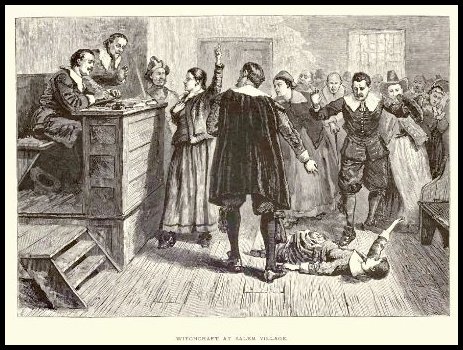
Accused!
As years passed, apologies were offered, and restitution was made to the victims' families. Historians and sociologists have examined this most complex episode in our history so that we may understand the issues of that time and apply our understanding to our own society. The parallels between the Salem witch trials and more modern examples of "witch hunting" like the McCarthy hearings of the 1950's, are remarkable.
Declaration of Regret - Salem Jurors
"We whose names are underwritten, being in the year 1692 called to serve as jurors in court at Salem, on trial of many who were by some suspected guilty of doing acts of witchcraft upon the bodies of sundry persons, we confess that we ourselves were not capable to understand, nor able to withstand, the mysterious delusions of the powers of darkness and Prince of the air, but were, for want of knowledge in ourselves and better information from others, prevailed with to take with such evidence against the accused, as, on further consideration and better information, we justly fear was insufficient for the touching the lives of any (Deut. xvii) whereby we fear we have been instrumental, with others, though ignorantly and unwittingly, to bring upon ourselves and this people of the Lord the guilt of innocent blood; which sin the Lord saith in Scripture he would not pardon (2 Kings xxiv.4) - that is, we suppose, in regard to his temporal judgments. We do therefore hereby signify to all in general, and to the surviving sufferers in special, our deep sense of, and sorrow for, our errors in acting on such evidence to the condemning of any person; and do hereby declare, that we justly fear that we were sadly deluded and mistaken - for which we are much disquieted and distressed in our minds, and do therefore humbly beg forgiveness, first of God, for Christ's sake, for this our error, and pray that God would impute the guilt of it to ourselves nor others, and we also pray that we may be considered candidly and aright by the living sufferers, as being then under a strong and general delusion, utterly unacquainted with, and not experienced in, matters of that nature.
We do hereby ask forgiveness of you all, whom we have justly offended, and do declare, according to our present minds, we would none of us do such things again, on such grounds, for the whole world - praying you to accept of this in way of satisfaction for our offense, and that you would bless the inheritance of the Lord, that he may be entreated for the land."
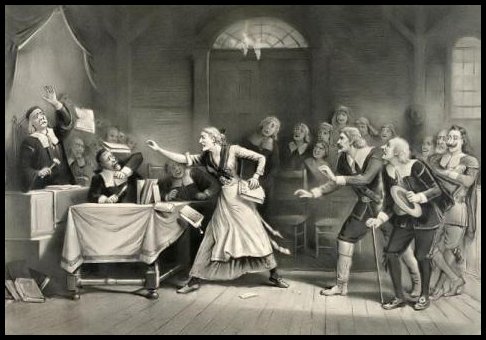
William Fisk - the Accuser is himself accused!
Thomas Fisk, Foreman | William Fisk | John Bacheler | Thomas Fisk | John Dane | Joseph Evelith
Thomas Pearly, Sr. | John Peabody | Thomas Perkins | Samuel Sayer | Andrew Eliot | Henry Herrick, Sr.
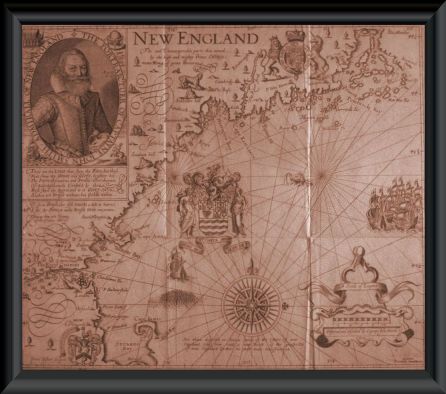
Map of New England in the 17th Century
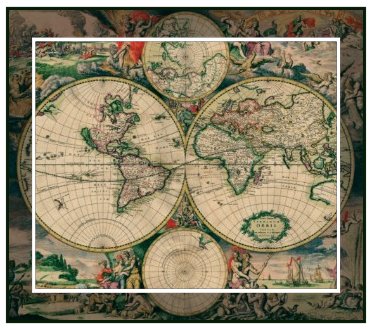
Map of the World in the 17th Century
The Translation
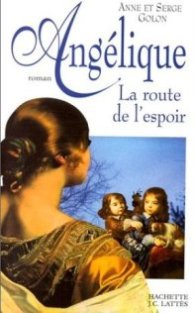 Right at the top of this page I told you that this was one of the, as yet, untranslated books which has long been awaited by many of Anne's fans. Sadly, some have even left their mortal coils without reading the translations, our founder President Harvey J Adkins was one. Thanks to him, many of us finally found a source of information concerning Anne Golon's Angélique. It also led to many of us meeting each other and sharing a number of experiences - some good, some bad. Some of us were lucky and privileged enough to meet Anne Golon through the good auspices of Harvey, whom we voted in as the first President of the 'Friends of Angélique' - it could hardly have been any different as Harvey was, to all intents and purposes, also the founder member of the group.
Right at the top of this page I told you that this was one of the, as yet, untranslated books which has long been awaited by many of Anne's fans. Sadly, some have even left their mortal coils without reading the translations, our founder President Harvey J Adkins was one. Thanks to him, many of us finally found a source of information concerning Anne Golon's Angélique. It also led to many of us meeting each other and sharing a number of experiences - some good, some bad. Some of us were lucky and privileged enough to meet Anne Golon through the good auspices of Harvey, whom we voted in as the first President of the 'Friends of Angélique' - it could hardly have been any different as Harvey was, to all intents and purposes, also the founder member of the group.
Harvey used the internet to reach out and we caught hold and held on tight - from that came an official web-site sanctioned by Anne Golon - currently the original 'World of Angélique' is not available but I have recreated as much of the site as I could here.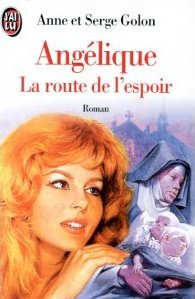
Because I have met Anne and earned her trust, I am enjoying sharing all the knowledge I have in the creation of this part of my personal web-site - no other author will merit quite such a comprehensive insight into their work. Other sections of the web-site will feature my diverse passions - Angélique was and continues to be a passion and was a 'quest'. Because of the trust that I earned, as did my sister - Anne Golon entrusted to us a copy of her manuscript of Route de L'Espoir and my sister is working on the translation. Like Anne Golon, my sister writes up her work (by hand) - I, am lucky enough to get to type it up! However, in my own defence, I did read the book first in French and then in Polish, so am not completely dependent on the English translation.
The images on the side bar are genuine scans of the original hand-corrected manuscript that had already been typed up by Anne's daughter Nadine and the final two images are a page of hand-written translation and my typing 'skills'.
I hope you have enjoyed this page - although Route de L'Espoir is not my favourite of the three as yet untranslated works, it is, in fact, the one I know best!
See the synopsis of all the books, translated from a Polish Press release here
Page refreshed : 1st August 2018

